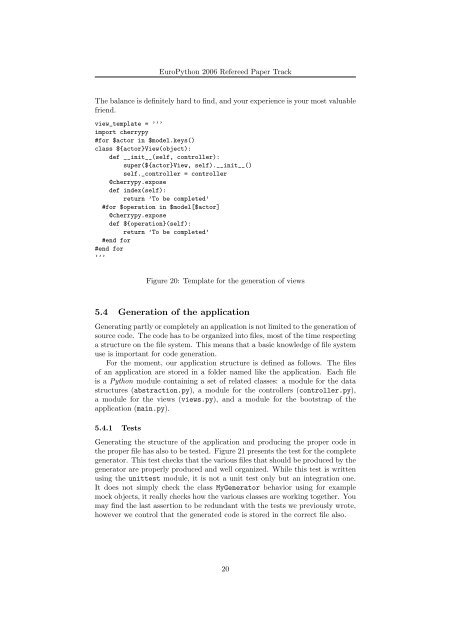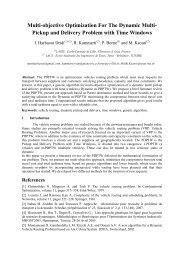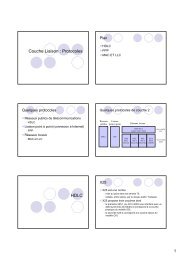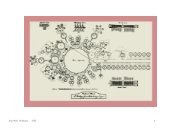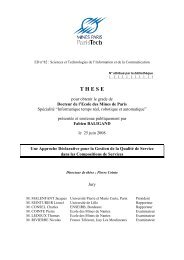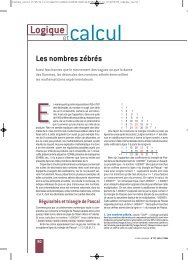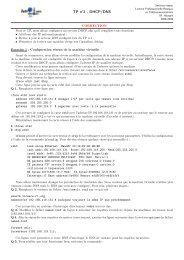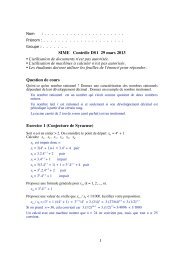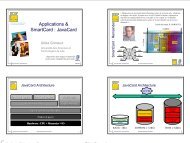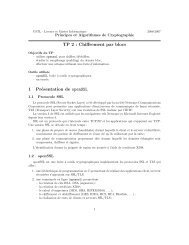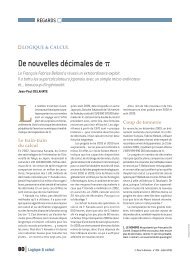An Introduction to Test-Driven Code Generation - LIFL
An Introduction to Test-Driven Code Generation - LIFL
An Introduction to Test-Driven Code Generation - LIFL
Create successful ePaper yourself
Turn your PDF publications into a flip-book with our unique Google optimized e-Paper software.
EuroPython 2006 Refereed Paper Track<br />
The balance is definitely hard <strong>to</strong> find, and your experience is your most valuable<br />
friend.<br />
view_template = ’’’<br />
import cherrypy<br />
#for $ac<strong>to</strong>r in $model.keys()<br />
class ${ac<strong>to</strong>r}View(object):<br />
def __init__(self, controller):<br />
super(${ac<strong>to</strong>r}View, self).__init__()<br />
self._controller = controller<br />
@cherrypy.expose<br />
def index(self):<br />
return ’To be completed’<br />
#for $operation in $model[$ac<strong>to</strong>r]<br />
@cherrypy.expose<br />
def ${operation}(self):<br />
return ’To be completed’<br />
#end for<br />
#end for<br />
’’’<br />
Figure 20: Template for the generation of views<br />
5.4 <strong>Generation</strong> of the application<br />
Generating partly or completely an application is not limited <strong>to</strong> the generation of<br />
source code. The code has <strong>to</strong> be organized in<strong>to</strong> files, most of the time respecting<br />
a structure on the file system. This means that a basic knowledge of file system<br />
use is important for code generation.<br />
For the moment, our application structure is defined as follows. The files<br />
of an application are s<strong>to</strong>red in a folder named like the application. Each file<br />
is a Python module containing a set of related classes: a module for the data<br />
structures (abstraction.py), a module for the controllers (controller.py),<br />
a module for the views (views.py), and a module for the bootstrap of the<br />
application (main.py).<br />
5.4.1 <strong>Test</strong>s<br />
Generating the structure of the application and producing the proper code in<br />
the proper file has also <strong>to</strong> be tested. Figure 21 presents the test for the complete<br />
genera<strong>to</strong>r. This test checks that the various files that should be produced by the<br />
genera<strong>to</strong>r are properly produced and well organized. While this test is written<br />
using the unittest module, it is not a unit test only but an integration one.<br />
It does not simply check the class MyGenera<strong>to</strong>r behavior using for example<br />
mock objects, it really checks how the various classes are working <strong>to</strong>gether. You<br />
may find the last assertion <strong>to</strong> be redundant with the tests we previously wrote,<br />
however we control that the generated code is s<strong>to</strong>red in the correct file also.<br />
20


